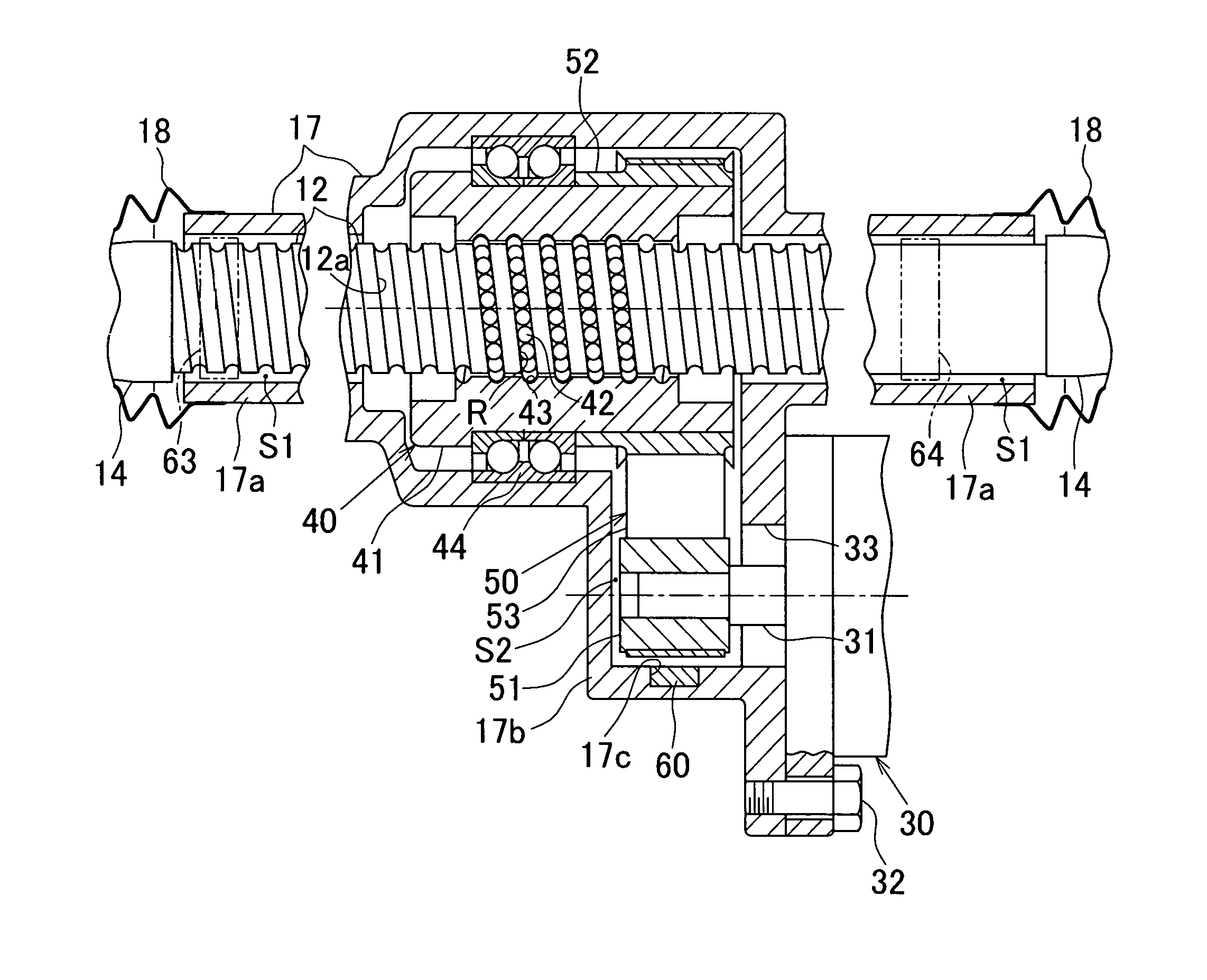Moisture sensor and steering system
a technology of moisture sensor and steering system, which is applied in the direction of secondary cells, batteries, instruments, etc., can solve the problem of power consumption of moisture sensor, and achieve the effect of reducing power consumption and consuming power
- Summary
- Abstract
- Description
- Claims
- Application Information
AI Technical Summary
Benefits of technology
Problems solved by technology
Method used
Image
Examples
first embodiment
[0022]a steering system will be described below. The steering system in the present embodiment is what is called a rack-parallel electric power steering system (RP-EPS).
[0023]As depicted in FIG. 1, an EPS 1 includes a steering mechanism 2 that steers steered wheels 16 based on a driver's operation of a steering wheel 10 and an assist mechanism 3 that assists the driver's steering operation.
[0024]The steering mechanism 2 includes a steering wheel 10 and a steering shaft 11 that rotates integrally with the steering wheel 10. The steering shaft 11 has a column shaft 11a coupled to the steering wheel 10, an intermediate shaft 11b coupled to a lower end of the column shaft 11a, and a pinion shaft 11c coupled to a lower end of the intermediate shaft 11b. A lower end of the pinion shaft 11c is coupled to a rack shaft 12 via a rack-and-pinion mechanism 13. Therefore, the steering mechanism 2 converts rotary motion of the steering shaft 11 into reciprocating linear motion of the rack shaft 1...
second embodiment
[0055]In the second embodiment, the moisture sensors 63, 64 are provided at similar distances from the respective steered wheels 16 in the axial direction of the rack shaft 12. However, the invention is not limited to this. For example, the moisture sensor 63 may be provided at a longer distance from the corresponding steered wheel 16 than the moisture sensor 64. Even in this case, the control circuit 71 can estimate which of the rack boots is degraded when the moisture sensors 63, 64 are provided at different distances from the receiving circuit 73.
[0056]In the embodiments, the receiving circuit 73 in the air pressure monitoring system 70 is used as a receiving circuit that receives signals from the transmission circuit 62. However, the invention is not limited to this. For example, a receiving circuit dedicated to the transmission circuit 62 may be newly provided.
[0057]In the embodiments, the EPS 1 is provided with the air pressure monitoring system 70. However, the invention is n...
PUM
 Login to View More
Login to View More Abstract
Description
Claims
Application Information
 Login to View More
Login to View More - R&D Engineer
- R&D Manager
- IP Professional
- Industry Leading Data Capabilities
- Powerful AI technology
- Patent DNA Extraction
Browse by: Latest US Patents, China's latest patents, Technical Efficacy Thesaurus, Application Domain, Technology Topic, Popular Technical Reports.
© 2024 PatSnap. All rights reserved.Legal|Privacy policy|Modern Slavery Act Transparency Statement|Sitemap|About US| Contact US: help@patsnap.com










